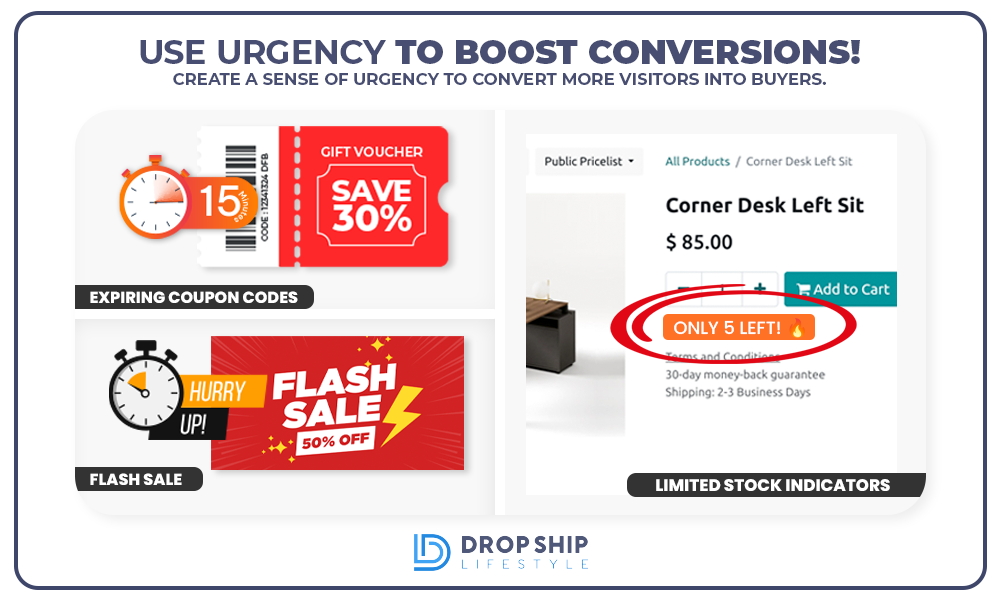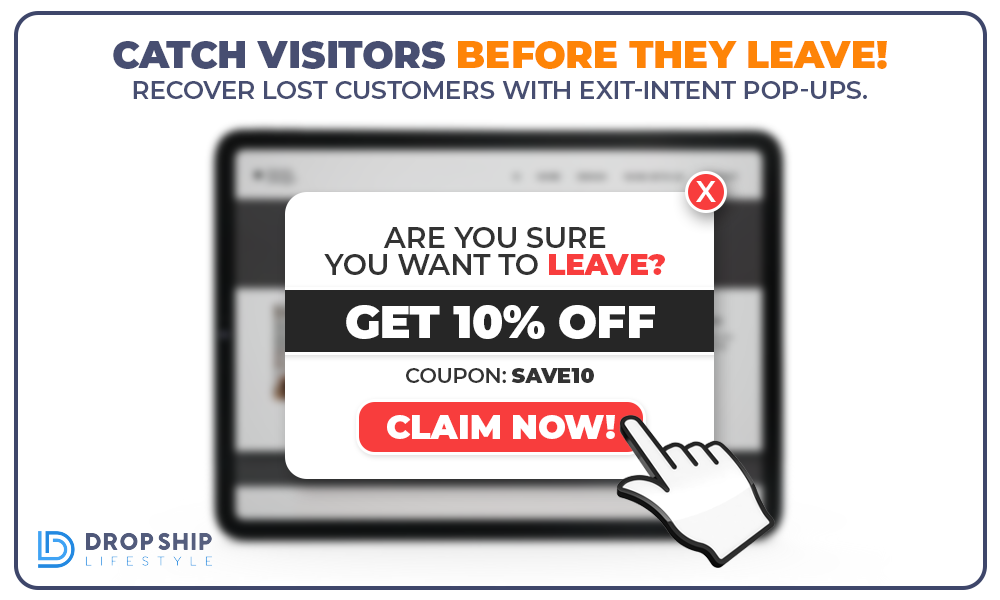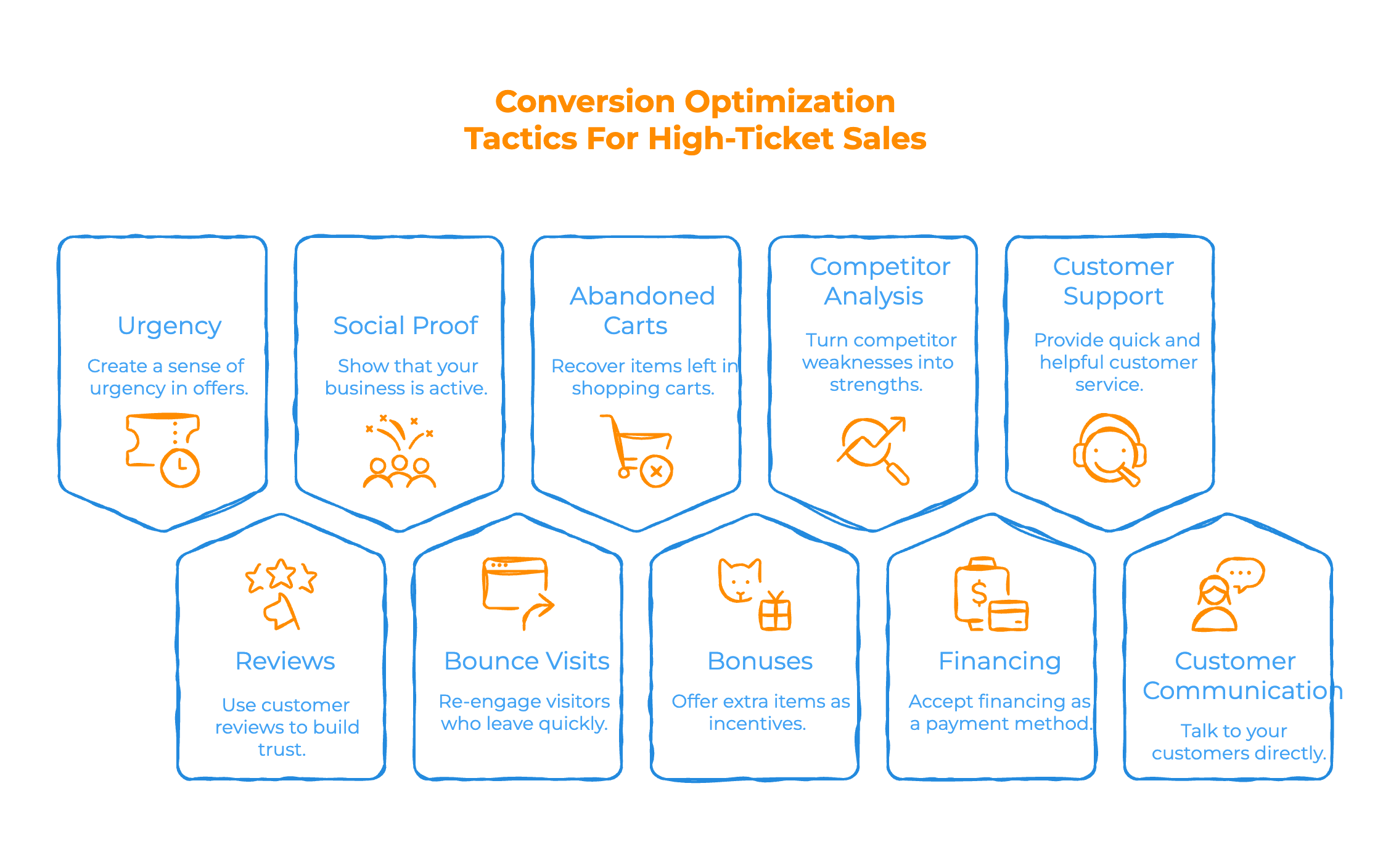If you’re selling $1,000+ products, you already know: traffic alone won’t build a profitable business. What really matters is conversion rates, how many of your visitors turn into paying customers.
The good news? Even small improvements in conversion rates can translate into massive revenue gains when you’re selling high-ticket products.
In this post, I’ll break down exactly how to improve conversion rates for high-ticket products, based on what works right now in my stores and across the Drop Ship Lifestyle community.
How to Calculate Your Conversion Rate
Before you improve your conversion rate, you need to know where you’re starting. Here’s the simple formula:
Conversion Rate (CVR) = (Number of Sales ÷ Number of Visitors) × 100
Example: If you had 1,000 visitors in a month and 25 of them made a purchase, your CVR would be:
(25 ÷ 1000) × 100 = 2.5%
For high-ticket eCommerce, a conversion rate of 2–3% from qualified traffic is a healthy baseline. From there, your goal is to consistently improve.
10 Proven Ways to Improve Conversion Rates for High-Ticket Products
To level up your conversion game, apply these tactics:
1. Use Urgency the Right Way
People procrastinate, even when they want your product. Adding urgency gives them a reason to act now instead of later.
- Add expiring coupon codes with real deadlines.
- Display low-stock alerts (only when stock is genuinely limited).
Urgency done right can push visitors from “thinking about it” to “buying today.”

2. Leverage Customer Reviews and Ratings
Nothing builds confidence like seeing real buyers happy with their purchase. Reviews reduce risk and make your store more trustworthy.
- Prioritize photo reviews over text-only reviews.
- Use tools like Judge.me to collect and display them.
- Incentivize reviews with a discount code for the next order.
3. Build Social Proof
High-ticket buyers want reassurance that your store is legitimate and active.
- Keep a consistent presence on Facebook and Instagram.
- Post at least once per week, even simple updates linking back to your store.
- Share customer photos and testimonials.
4. Capture Bounce Visits Before They Leave
Not every visitor will buy on their first visit. But you don’t want them leaving forever.
- Add exit-intent pop-ups with discounts or value offers.
- Capture emails in exchange for coupons or guides.
- Follow up with automated email sequences to bring them back.

5. Recover Abandoned Carts
Cart abandonment is the silent killer of high-ticket stores. Fight back with:
- Abandoned cart email sequences that go out immediately and over the following days.
- Dynamic remarketing ads showing shoppers the exact product they left behind.
- Real-time follow-ups if possible (a quick call or text can recover a $2,000+ sale instantly).
6. Sweeten the Deal with Bonus Offers
Stand out by bundling in a value-added bonus with your top products.
- Example: Buy a $2,500 3D printer and get a $150 spool of printing material for free.
- Clearly display the bonus value and add visuals to highlight the deal.
7. Exploit Competitors’ Weaknesses
Do what your competitors don’t. Compare their stores to yours and highlight your advantages.
- Faster shipping times.
- Clearer return policies.
- Manufacturer warranties they don’t mention.
Show customers why you’re the safer, smarter choice.
8. Offer Financing Options
Many customers are ready to buy but hesitant to drop $2,000+ in one payment. That’s where financing helps.
- On Shopify, enable Shop Pay Installments.
- Consider Klarna, Affirm, or PayPal Credit if available in your region.
You still get paid in full upfront, while customers pay over time. Win-win.
9. Provide Responsive Customer Support
For high-ticket buyers, trust and access matter. Offer multiple ways to connect:
- Place your phone number at the top of your site.
- Use Shopify Inbox for live chat.
- Add an AI chatbot for quick FAQs.
Quick, professional support can be the deciding factor in a $5,000 sale.
10. Watch Visitor Behavior Closely
Want to know exactly where you’re losing sales? Watch real visitors on your site.
- Use tools like Lucky Orange to record browsing sessions.
- Look for patterns like clicks on non-clickable elements or confusion around product descriptions.
- Adjust based on data, not guesswork.
Key Takeaway
Improving conversion rates for high-ticket products is about removing doubt and adding urgency, trust, and value.
Start with these 10 tactics:

When you apply these consistently, you’ll transform your store into a conversion machine that closes more $1,000+ orders.
Want more proven strategies? Join my free training today and I’ll show you how to build a high-ticket dropshipping store that gets sales in as little as 21 days.



Hey Everyone,
As many of you already know, I created Drop Ship Lifestyle after selling a network of eCommerce stores and then trying to find a community of other store owners to network with… What I found was a bunch of scammers who promised newbies they would get rich quickly by following their push-button systems!
This led me to create a new community along with an online training program that shares how to build a REAL online business.
I’d love to hear what you think… It’s a 2.5-hour training designed to help you drop ship profitably… all for free.
Be sure to click here to check it out and send me your feedback!
If you go through the “How To Start & Grow A Hyper-Profitable Online Store” webinar and still have questions, just contact me, and I will help you out.